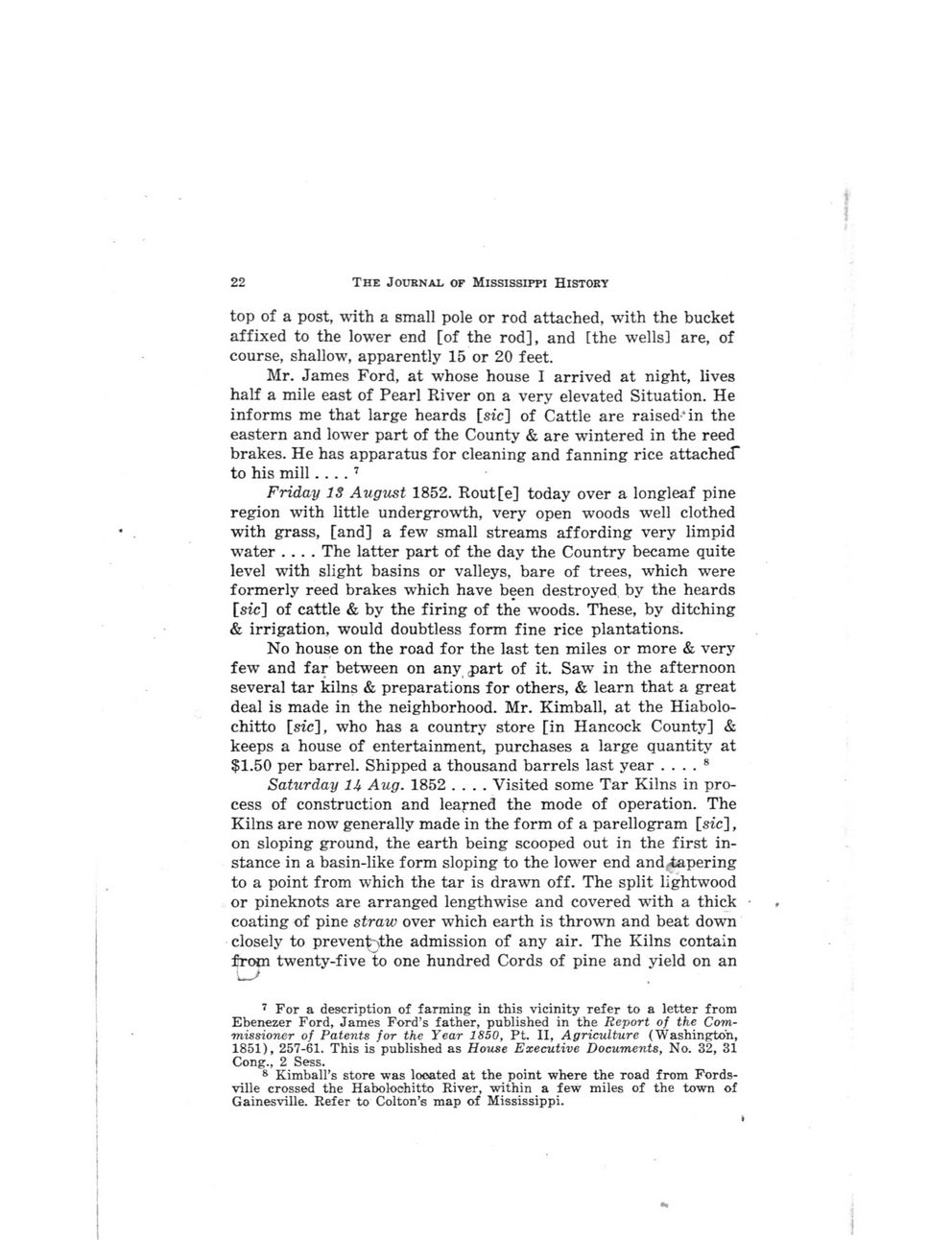This text was obtained via automated optical character recognition.
It has not been edited and may therefore contain several errors.
22 The Journal of Mississippi History top of a post, with a small pole or rod attached, with the bucket affixed to the lower end [of the rod], and [the wells] are, of course, shallow, apparently 15 or 20 feet. Mr. James Ford, at whose house I arrived at night, lives half a mile east of Pearl River on a very elevated Situation. He informs me that large heards [sic] of Cattle are raised* in the eastern and lower part of the County & are wintered in the reed brakes. He has apparatus for cleaning and fanning rice attached* to his mill....7 Friday IS August 1852. Rout[e] today over a longleaf pine region with little undergrowth, very open woods well clothed with grass, [and] a few small streams affording very limpid water .... The latter part of the day the Country became quite level with slight basins or valleys, bare of trees, which were formerly reed brakes which have been destroyed by the heards [sic] of cattle & by the firing of the woods. These, by ditching & irrigation, would doubtless form fine rice plantations. No house on the road for the last ten miles or more & very few and far between on any part of it. Saw in the afternoon several tar kilns & preparations for others, & learn that a great deal is made in the neighborhood. Mr. Kimball, at the Hiabolo-chitto [sic], who has a country store [in Hancock County] & keeps a house of entertainment, purchases a large quantity at $1.50 per barrel. Shipped a thousand barrels last year .... 8 Saturday 14 Aug. 1852 .... Visited some Tar Kilns in process of construction and leaj-ned the mode of operation. The Kilns are now generally made in the form of a parellogram [sic], on sloping ground, the earth being scooped out in the first instance in a basin-like form sloping to the lower end and-topering to a point from which the tar is drawn off. The split lightwood or pineknots are arranged lengthwise and covered with a thick coating of pine straw over which earth is thrown and beat down closely to prevent'xthe admission of any air. The Kilns contain from twenty-five to one hundred Cords of pine and yield on an ___/ 7 For a description of farming in this vicinity refer to a letter from Ebenezer Ford, James Ford?s father, published in the Report of the Commissioner of Patents for the Year 1850, Pt. II, Agriculture (Washington, 1851), 257-61. This is published as House Executive Documents, No. 32, 31 Cong., 2 Sess. 8 Kimball?s store was located at the point where the road from Fords-ville crossed the Habolochitto River, within a few miles of the town of Gainesville. Refer to Colton?s map of Mississippi.

Claiborne, J.F.H Claiborne-J.F.H-062